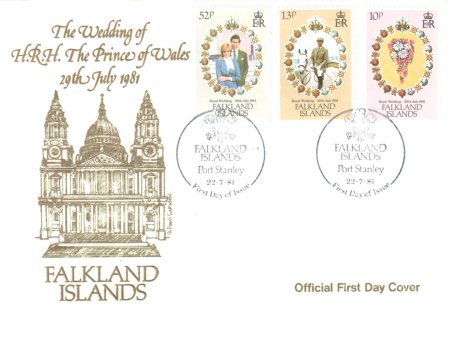 This week finds me jumping from Jane Austen’s sister-in-law Fanny Austen, to crazy bibliophiles, Rossetti’s wombats, the Coloring craze, Princess Margaret, and on to London, muons (whatever they are…), and more of course – it’s a mad world of information out there…
This week finds me jumping from Jane Austen’s sister-in-law Fanny Austen, to crazy bibliophiles, Rossetti’s wombats, the Coloring craze, Princess Margaret, and on to London, muons (whatever they are…), and more of course – it’s a mad world of information out there…
A new website and blog by Sheila Johnson Kindred, where she will explore Jane Austen’s naval world. Kindred is the author of Jane Austen’s Transatlantic Sister: The Life and Letters of Fanny Palmer Austen: https://www.sheilajohnsonkindred.com/
This made me laugh: always great stuff on The Londonist
https://londonist.com/london/outside-london/london-paris-comparison
*
 The Yale Law School Library has a new exhibit on its rare bindings: https://library.law.yale.edu/news/new-exhibit-legally-binding-fine-and-historic-bindings-yale-law-library
The Yale Law School Library has a new exhibit on its rare bindings: https://library.law.yale.edu/news/new-exhibit-legally-binding-fine-and-historic-bindings-yale-law-library
- Many of the books and bindings are on the Yale Flickr site: http://www.flickr.com/photos/yalelawlibrary/
- And at Yale’s Beinecke there is a rare book exhibit to which all crazy bibliophiles must go: https://beinecke.library.yale.edu/exhibitions/bibliomania-or-book-madness-bibliographical-romance
- With a write-up about it at the Fine Books & Collections blog:
https://www.finebooksmagazine.com/fine_books_blog/2019/01/bibliomania-at-the-beinecke.phtml
*
So, who doesn’t love a wombat?! https://publicdomainreview.org/2019/01/10/how-the-pre-raphaelites-became-obsessed-with-the-wombat/
Image: Dante Gabriel Rossetti’s frontispiece, complete with wombat, for his sister Christina’s long poem Goblin Market
*
A new blog on Early Modern Female Book Ownership (how nice we were allowed to have books…): https://earlymodernfemalebookownership.wordpress.com/
-which led me to this: https://franceswolfrestonhorbouks.com/, a blog by Sarah Lindenbaum, who is seeking to reconstruct the book collection of Frances Wolfreston (1607-1677), a gentrywoman from the English midlands with an expansive library; over 200 books have been identified thus far.
*
Have you gotten caught up in the coloring book craze? Here’s some history: it’s nothing new – https://publicdomainreview.org/2019/02/06/filling-in-the-blanks-a-prehistory-of-the-adult-coloring-craze/
Image: The page from the University of Oklahoma’s colored version of Leonhart Fuchs’ De historia stirpium commentarii insignes
This is an example of how finding one interesting link leads to more and you might never get up from your desk again…
-The Folger also is into the coloring craze: Color Our Collections (was available to download Feb 4-8, 2019): https://folgerpedia.folger.edu/Color_Our_Collections?utm_source=wordfly&utm_medium=email&utm_campaign=ShakespearePlus6Feb2019&utm_content=version_A&promo=
–…which leads you to the Folgers whole collection of British Book Illustrations from the 17th century:
https://britishbookillustrations.folger.edu/?_ga=2.137070000.1247254353.1549814122-1754199278.1548275325#explore
—…which leads you to this illustration from the color week in 2017: Louis Rhead, Romeo & Juliet, for Tales from Shakespeare by Charles and Mary Lamb —-and then back to #colorourcollections on twitter: https://twitter.com/search?q=%23colorourcollections&src=tyah
—-and then back to #colorourcollections on twitter: https://twitter.com/search?q=%23colorourcollections&src=tyah
—–and on to facebook too: https://www.facebook.com/search/str/%23colorourcollections/keywords_search?epa=SEARCH_BOX
I’m exhausted and I haven’t even begun to color yet…
 Back to Jane, for a minute: A nice review of the latest Pride and Prejudice redo, Unmarriageable, set this time in Pakistan: https://writergurlny.wordpress.com/2019/02/05/unmarriageable-a-novel-book-review/
Back to Jane, for a minute: A nice review of the latest Pride and Prejudice redo, Unmarriageable, set this time in Pakistan: https://writergurlny.wordpress.com/2019/02/05/unmarriageable-a-novel-book-review/
*
The Museum of London has acquired an 1815 panorama of London painted by Pierre Prévost; Kelly McDonald on her Two Teens in the Time of Austen blog writes all about it: https://smithandgosling.wordpress.com/2019/02/07/jane-austens-london-1815/
*
A new exhibit at the V&A on Christian Dior: https://www.vam.ac.uk/exhibitions/dior-designer-of-dreams – and https://secretldn.com/inside-va-dior-exhibition/
The exhibit includes Princess Margaret’s 21st birthday dress – read more at this Smithsonian article:
https://www.smithsonianmag.com/smart-news/princess-margarets-iconic-21st-birthday-dress-goes-displaystains-and-all-180971404/
*
A new chamber in the Great Pyramid? If you know what a “muon” is, you might know that the use of muon technology has revealed an as yet undiscovered chamber in the Great Pyramid, where remaining treasures may lie: https://blog.oup.com/2019/02/power-mysterious-muon/
*
Here’s a bit of a head-scratcher: with thanks to Tony Grant:
https://www.atlasobscura.com/articles/transcribe-old-documents-unreadable-handwriting
The article shows a letter from Jane Austen to Cassandra that Ms. Watson has transcribed; but she states: “You can actually see how they have changed their manuscript – how Jane Austen changed Pride and Prejudice as she’s writing it… That blows my mind a bit. You see it, and you think – that’s so much better after she’s edited it than before.”
Well, I’m sorry but as far as I know there are no manuscripts of Pride and Prejudice, or any of the other 5 novels other than the cancelled chapters of Persuasion – so this is very interesting if she has been transcribing a P&P manuscript??
You can see and read all of Austen’s actual fiction manuscripts here: https://janeausten.ac.uk/index.html
*
And finally, for your reading pleasure – I love finding something rather obscure: https://www.victoriansecrets.co.uk/book/dorotheas-daughter-and-other-nineteenth-century-postscripts/
“Dorothea’s Daughter is a stunning new collection of short stories based on novels by Jane Austen, Charlotte Brontë, Charles Dickens, George Eliot, and Thomas Hardy. They are postscripts, rather than sequels, entering into dialogues with the original narratives by developing suggestions in the text. The authors’ conclusions are respected, with no changes made to the plot; instead, Barbara Hardy draws out loose threads in the original fabric to weave new material, imagining moments in the characters’ future lives.”
- Twilight in Mansfield Parsonage (Mansfield Park by Jane Austen)
- Mrs Knightley’s Invitation (Emma by Jane Austen)
- Adèle Varens (Jane Eyre by Charlotte Brontë)
- Lucy Snowe and Paulina Bretton: the Conversation of Women (Villette by Charlotte Brontë)
- Edith Dombey and Son (Dombey and Son by Charles Dickens)
- Harriet Beadle’s Message (Little Dorrit by Charles Dickens)
- Lucy Deane (The Mill on the Floss by George Eliot)
- Dorothea’s Daughter (Middlemarch by George Eliot)
- ’Liza-Lu Durbeyfield (Tess of the D’Urbervilles by Thomas Hardy)
Has anyone read this? It was first published in 2011. I’ve just ordered it and will let you know my thoughts…
Thanks for visiting… and Happy Reading…
ps: just a note as to why I leave in the full url of each link: if an imbedded link goes bad or far off into cyberspace, it is easier to find it if you have the details in the url – it doesn’t look as pretty, sorry to say, but more helpful in the end..























































































